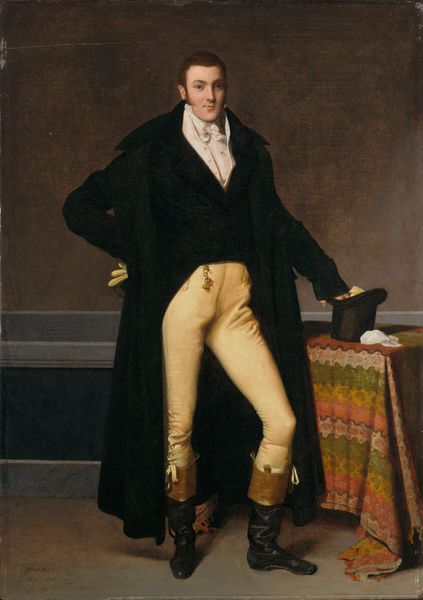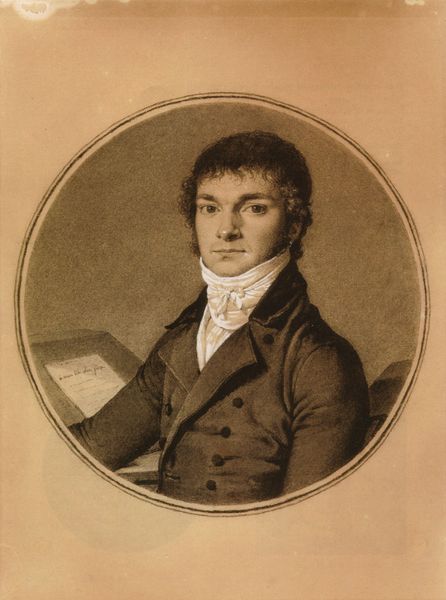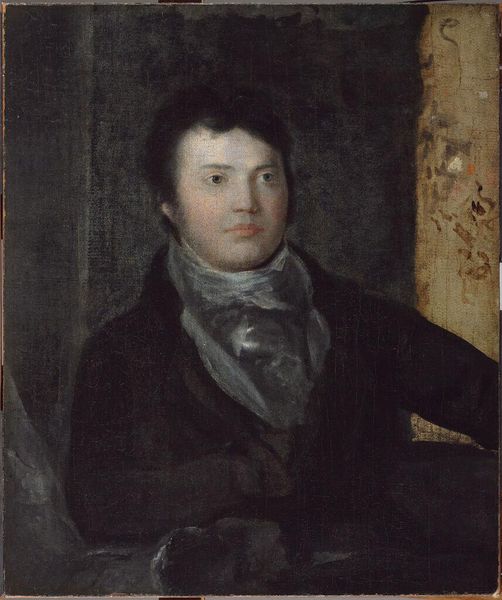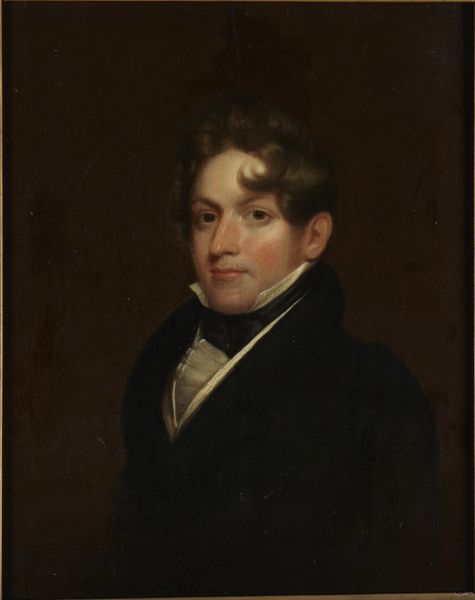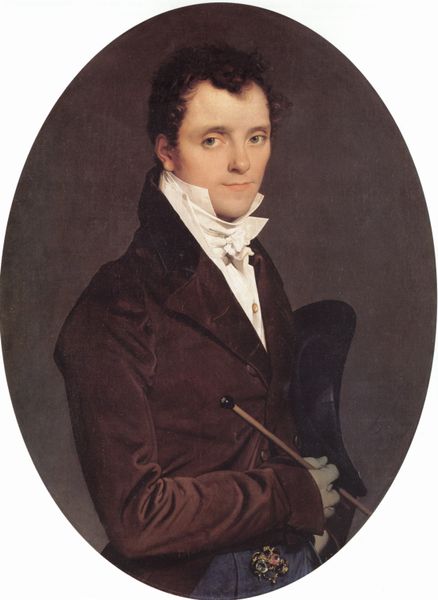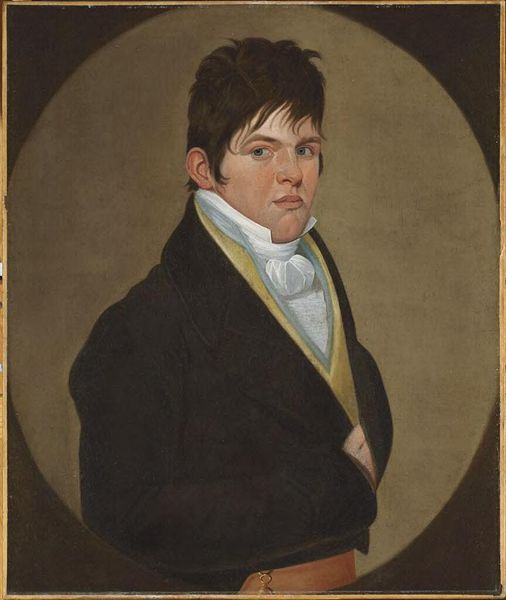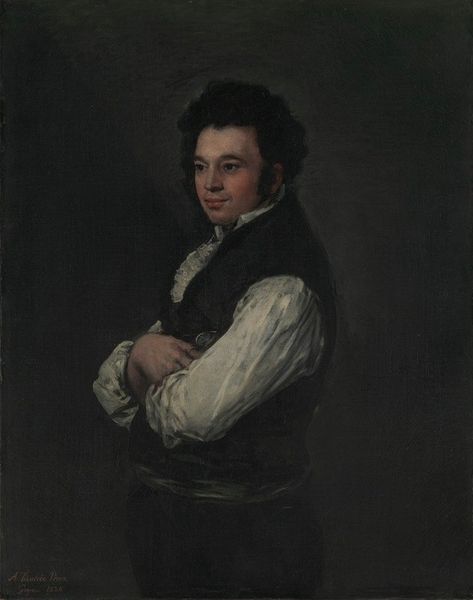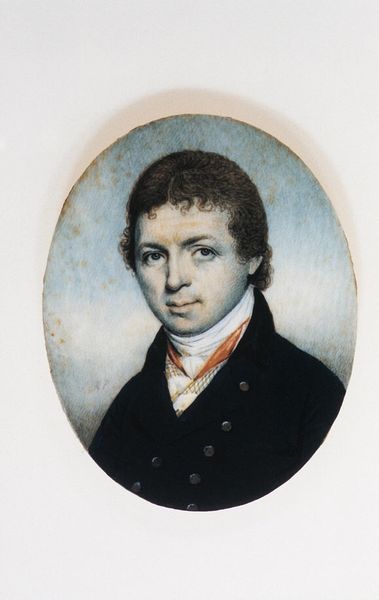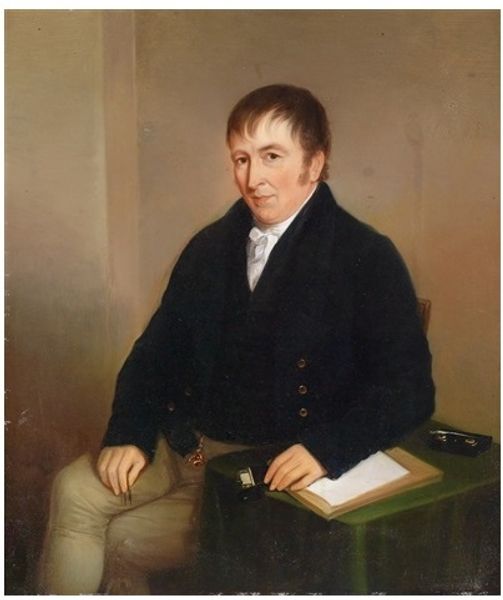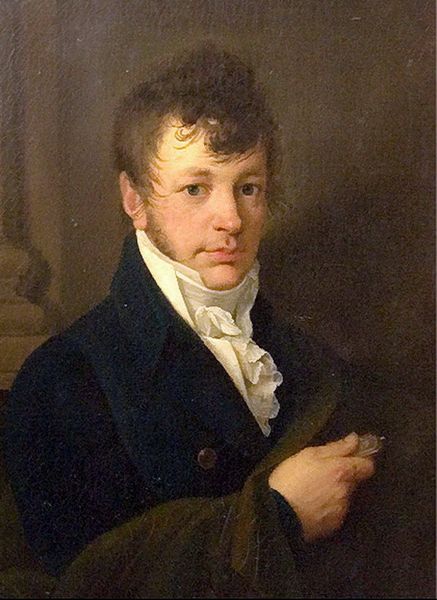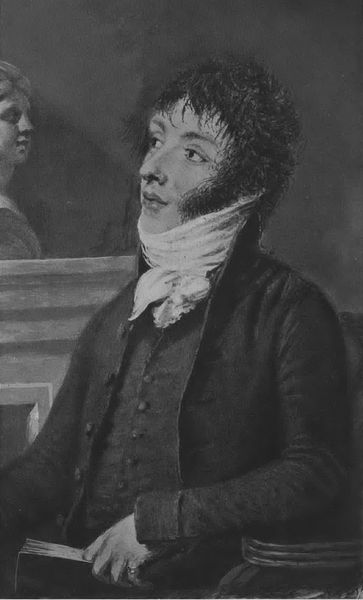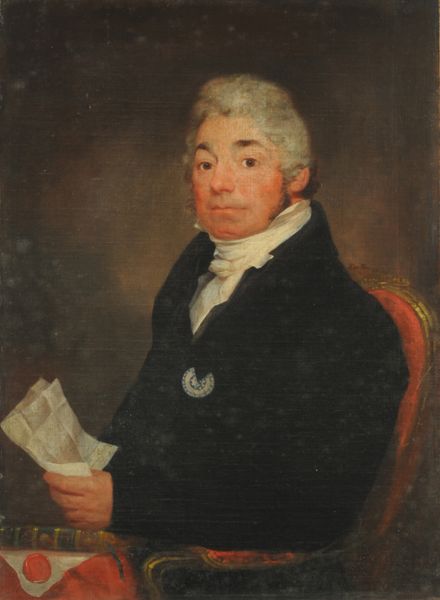
painting, oil-paint
#
portrait
#
neoclacissism
#
painting
#
oil-paint
#
portrait subject
#
figuration
#
portrait reference
#
male-portraits
#
portrait head and shoulder
#
animal drawing portrait
#
portrait drawing
#
facial portrait
#
academic-art
#
portrait art
#
fine art portrait
#
realism
#
celebrity portrait
#
digital portrait
Dimensions: 116 x 89 cm
Copyright: Public domain
Editor: So, this is "Portrait of Monsieur Rivière," painted by Jean-Auguste-Dominique Ingres in 1805. It's oil on canvas. What strikes me is the sitter's gaze. He seems confident but also…slightly amused? How do you interpret this work? Art Historian: An astute observation! I am fascinated by how this gaze interacts with the Neoclassical style. The clean lines and balanced composition evoke reason and order, key values of that period. However, as you pointed out, the expression complicates this. What symbolic elements do you notice? Editor: Well, there's the elaborate chair, suggesting status, and some papers and books. What about the lion head on the chair arm? Is that significant? Art Historian: Indeed. Lions are age-old symbols of courage, power, and even royalty. Their integration into furniture and artwork often conveyed an ambition for social mobility. Think of it as a deliberate choice to associate Monsieur Rivière with particular qualities. How might that connect to the gaze you mentioned earlier? Editor: Maybe the confidence comes from knowing his worth and his place in society? He wants to project that power, perhaps? Art Historian: Precisely. Ingres uses this combination of realism and symbolism to create a layered narrative. The meticulous details—the folds of his cravat, the rings on his fingers—all add up to a portrait intended to convey a carefully constructed image. What do you think the future holds for such representation of the bourgeoisie? Editor: I see! I was so focused on his face that I didn’t really consider all the other details as consciously constructed symbols. I’ll definitely look at portraits differently now, considering the interplay of expression and symbolic context. Art Historian: It is a lesson which remains vital even to this day.
Comments
No comments
Be the first to comment and join the conversation on the ultimate creative platform.
